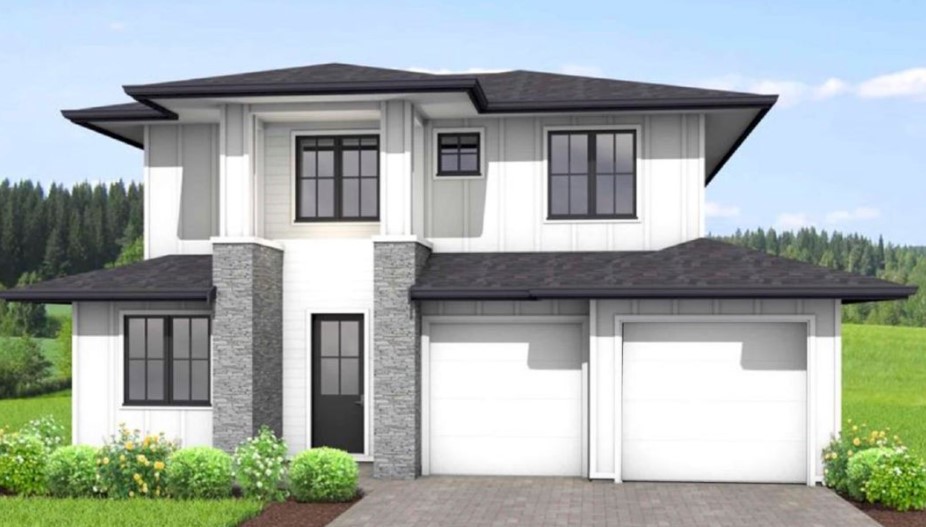Construction-to-Permanent Mortgages For New-Build Homes
Building your dream home is an exciting and ambitious project. However, navigating the financial aspects can be complex, especially when it comes to securing the right type of mortgage.
With some home builders, like JD Signature Homes, the buyer is not financing the construction of the house, they are just making a deposit. In other situations, one of the most versatile and convenient options available to prospective homeowners is the construction-to-permanent mortgage. It is important that buyers of new construction work with their real estate agent and home builder to determine which rates and programs are most beneficial their own financial situation.
A traditional construction-to-permanent mortgage of loan is designed to cover the costs of building a home and then seamlessly transition into a permanent mortgage once construction is complete. Home buyers considering a new build home need to understand what a construction-to-permanent mortgage is, how it works, its benefits, and considerations to keep in mind.
What is a Construction to Permanent Mortgage?
A construction-to-permanent mortgage, also known as a “single-close” or “one-time-close” loan, is a type of financing that combines a construction loan with a traditional mortgage. This means you only need to go through the application and closing process once, rather than securing separate loans for construction and permanent financing. This streamlined approach simplifies the process and can save time, money, and hassle.

How Does a Construction-to-Permanent Mortgage Work?
A construction-to-permanent mortgage involves two main phases: the construction phase and the permanent mortgage phase.
- Construction Phase:
- Loan Approval: The process begins with the approval of the construction loan, which typically involves a detailed review of your financial situation, the construction plans, and the builder’s credentials.
- Draw Schedule: Once approved, a draw schedule is established. This schedule outlines the stages of construction and the corresponding disbursements of funds to the builder. For example, funds might be released at key milestones such as foundation completion, framing, and final inspection.
- Interest Payments: During the construction phase, you will make interest-only payments on the amounts that have been disbursed. The interest rate is usually variable and tied to the prime rate or another index.
- Construction Oversight: The lender typically requires regular inspections to ensure that the construction is progressing according to the plans and budget. These inspections also help verify that the funds are being used appropriately.
- Permanent Mortgage Phase:
- Completion of Construction: Once the construction is complete, a final inspection is conducted to ensure the home meets all specifications and codes.
- Conversion to Permanent Loan: The construction loan then converts into a permanent mortgage. This phase involves setting the terms of the permanent loan, including the interest rate (which can be fixed or adjustable), loan duration, and monthly payment amount.
- Start of Regular Payments: You will begin making regular mortgage payments, which include both principal and interest, based on the terms of the permanent loan.
Benefits of a Construction-to-Permanent Mortgage
- Convenience and Simplicity: The single-close process eliminates the need for two separate loan applications and closings, simplifying the overall experience.
- Cost Savings: By combining the construction and permanent financing, you save on closing costs, fees, and administrative expenses associated with securing two separate loans.
- Interest Rate Protection: Some construction-to-permanent loans offer the option to lock in your interest rate during the construction phase, protecting you from potential rate increases by the time your home is complete.
- Streamlined Budgeting: With a clear understanding of your financing from the start, you can more effectively budget for both the construction and long-term mortgage payments.
Considerations and Potential Drawbacks
While construction to permanent mortgages offer many advantages, there are some considerations and potential drawbacks to keep in mind:
- Higher Initial Costs: The initial approval process for a construction-to-permanent mortgage can be more rigorous and costly than a standard mortgage. Lenders may require detailed plans, specifications, and cost estimates, which can increase upfront expenses.
- Interest Rate Fluctuations: If the interest rate is not locked in during the construction phase, you may face higher rates when the loan converts to a permanent mortgage. This can increase your long-term costs.
- Complex Approval Process: Securing a construction-to-permanent mortgage typically requires thorough scrutiny of your financial health, the builder’s credentials, and the construction plans. This can be more time-consuming and complex compared to a standard mortgage.
- Builder Reliability: The success of your project largely depends on the reliability and quality of your builder. Any delays, cost overruns, or issues with the construction can impact the loan disbursements and the overall timeline of your project.
Steps to Secure a Construction to Permanent Mortgage
- Research Lenders: Not all lenders offer construction-to-permanent mortgages, so it’s important to research and find those who specialize in this type of financing. Look for lenders with experience, good reputations, and competitive terms.
- Get Pre-Approved: Before starting your home construction project, get pre-approved for a construction-to-permanent mortgage. This involves a detailed review of your financial situation, credit history, and the proposed construction project.
- Select a Builder: Choose a reputable builder with a solid track record. Your lender will likely require information about the builder’s qualifications and past projects.
- Develop a Detailed Plan: Work with your builder to create a detailed construction plan, including blueprints, specifications, and a budget. This will be necessary for loan approval.
- Submit Your Application: Submit your loan application along with all required documentation, including the construction plans, builder information, and financial details.
- Close on the Loan: Once approved, you will close on the loan and begin the construction phase. The lender will disburse funds according to the agreed-upon draw schedule.
- Monitor Construction: Stay involved in the construction process and ensure that inspections are conducted as required. Keep communication open with your lender and builder to address any issues promptly.
- Convert to Permanent Loan: Upon completion of construction and final inspection, the loan will convert to a permanent mortgage, and you will start making regular mortgage payments.
Financing Your New Construction Home
A construction-to-permanent mortgage is an excellent option for those looking to build their dream home. By combining the financing for both construction and the permanent mortgage into one loan, this type of mortgage offers convenience, cost savings, and a streamlined process. However, it’s essential to understand the complexities involved and work with experienced professionals to ensure a successful project.
With careful planning and diligent oversight, a construction-to-permanent mortgage can make the journey to homeownership smooth and rewarding.



